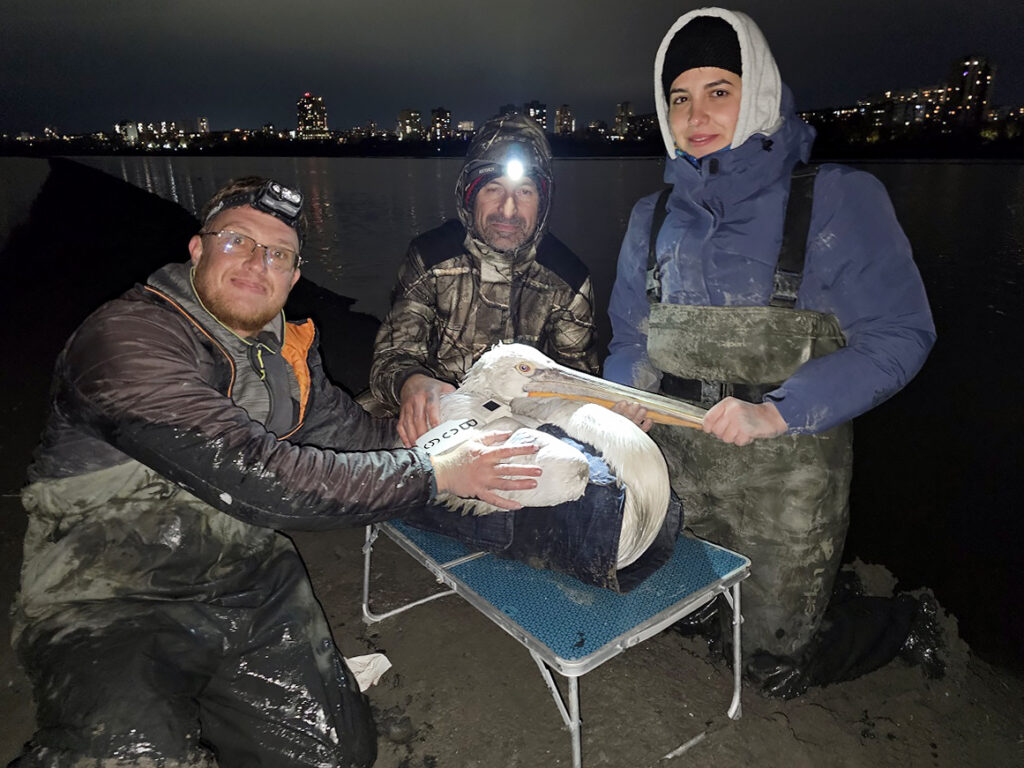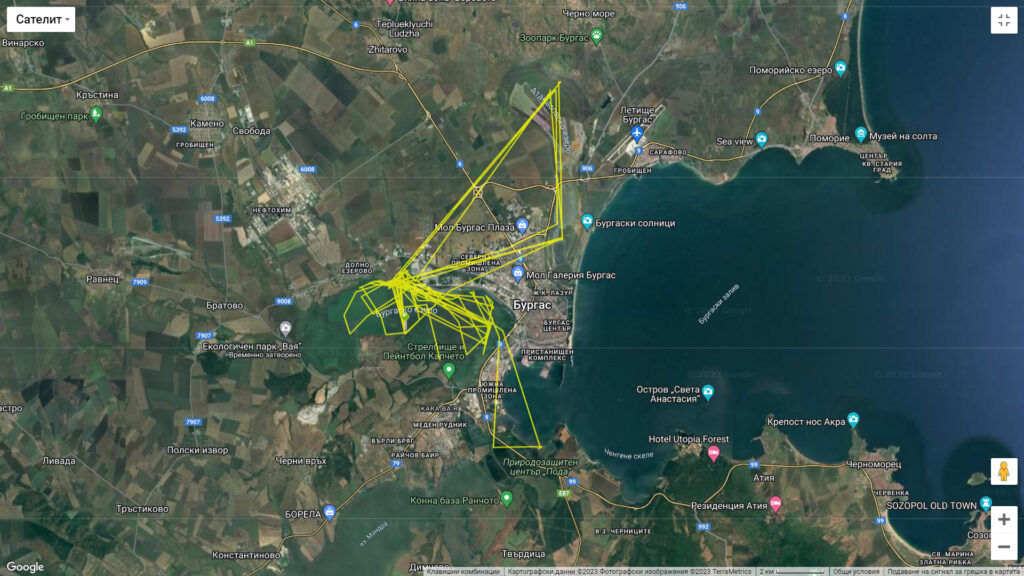At the end of November and the beginning of December, a team from the Bulgarian Society for the Protection of Birds (BSPB) captured and successfully ringed four Dalmatian pelicans, placing satellite transmitters on three of them. The birds were tagged in the Burgas Lakes area.

The transmitters weigh a few grams and are placed on a special section of the pelicans’ wing where they do not cause discomfort. The tagged birds get used to the transmitters very quickly and can carry out their daily activities without any problems.
Immediately after the procedures, the Dalmatian pelicans were released. Currently, the transmitter data indicates that the tagged birds are in the area, feeding in the Burgas Lake and Mandra Reservoir, and roosting on the dams at the Atanasovsko Lake.

The three pelicans tagged with transmitters are females and are named Stella, Plamena, and Nikolaya. Plamena is the third adult Dalmatian pelican with a satellite transmitter in Bulgaria, while Stella and Nikolaya are young birds. This brings the total number of pelicans tagged this season to nine. Unfortunately, three of them, Maria, Kali, and Desi, have died, but they provided valuable data nonetheless.
Placing transmitters on Dalmatian pelicans is a major advance in the study of this rare species. Using ring data and satellite telemetry, scientists can track the birds’ movements and locate places where pelicans feed, roost, rest, and nest. Separately, valuable data on speed, altitude, and flight patterns are obtained in real-time. Thanks to the transmitters, we will learn more about the ecology, movements, and threats to the species, which will help us plan and take future conservation measures to protect it.


Soon the data from the transmitter will be uploaded to our website and it will be possible to track the movements of the tagged pelican almost in real-time.
The study of the species is carried out within the framework of the “Pelican Way of LIFE“ initiative (LIFE18/NAT/NL/000716), coordinated by Rewilding Europe and funded by the LIFE Programme of the European Union and Arcadia Foundation, and with the assistance in Bulgaria of the Whitley Fund for Nature.